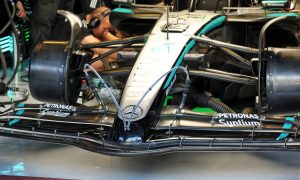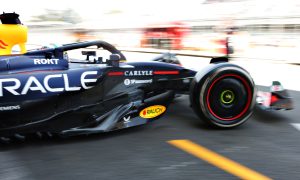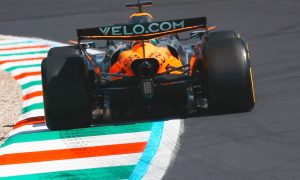
The FIA has decided to reinforce its scrutiny of special engine modes that help exhaust blowing of rear wings in Formula 1.
Nikolas Tombazis, the governing body's head of single seater technical matters, has sent a note to teams reiterating the FIA's stance on exhaust blowing, reminding competitors that it would not allow trick engine modes or any other means which could induce the blowing.
"We do not accept that engine modes specifically designed to increase the exhaust flow in corners are permissible,” wrote Tombazis.
“Such (not permissable) engine modes can be either specific to a compressor-turbine by-pass system, or to flow passing through the cylinders," wrote Tombazis.
"To be permissible, such flows should be the result of settings that genuinely increase the performance or reliability of the power unit, and not contrived to increase the exhaust flow."
It is believed the note was justified by the FIA's suspicions that clever means may have been exploited to circumvent the original directive on exhaust blowing. The governing body will handle each case individually.
"Notwithstanding the above point, we do not feel that it is practical or easy to write a catch-all rule that achieves this aim in a perfect way,” added the directive.
"For this purpose, we intend to control the usage of engine modes on a case-by- case basis and provide the necessary requests to the teams in order to stay within the acceptable limits with regard to [the above] point.
"While this is clearly not perfectly satisfactory, we feel it is the best possible way to handle the situation for 2018, especially as the effects are not large in any case."
The FIA was confident it had addressed exhaust blowing in 2014, but last year's regulation change, which led to lower rear wings on F1's new-spec cars brought the issue back into play, thanks to clever pipe positioning.

"One of the objectives of the 2014 regulations was to eliminate once and for all any exhaust influence on the car's aerodynamic performance," Tombazis wrote.
"And while this objective has been largely achieved, the 2017 rules brought back an exhaust effect on rear downforce, mainly because of the lower position of the rear wing. Clearly this effect remains much smaller than the effects that were commonplace in 2011-2013, but it is still undesirable."
Tombazis insists teams are still allowed a certain amount of leeway in terms of how exhausts are positioned, with Renault's specific – and legal - approach a case in point.
"Regarding the tailpipe position in relation to the rear wing and bodywork, we accept any position within the stated limits of the regulations,” wrote the FIA official.
"It is the right of any competitor to design their car in such way to have the most advantageous installation for their car's performance, provided this installation is indeed within the limits of the regulations."
Tombazis added that a more definitive and restrictive anti-exhaust blwoing ruling shall be introduced for 2019.
"For 2019, we intend to overcome this issue by acting on the exhaust position," he wrote. "This matter was discussed in the last TWG, but we do not feel that a sufficient solution was found.
"Hence, we intend to have a discussion on this topic in the next TWG, with the aim to achieve an exhaust position that clearly prevents any direct aerodynamic gain, thus eliminating the need for checks on engine modes."
Gallery: The beautiful wives and girlfriends of F1 drivers
Keep up to date with all the F1 news via Facebook and Twitter






